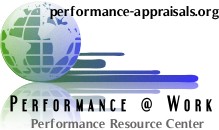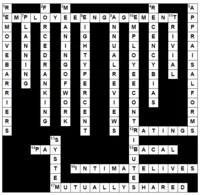Employee Ranking Systems : Rank and Yank
Top : Employee Ranking Systems : Rank and Yank - Usually attributed to Jack Welch at GE, Rank and Yank is a performance management system that ranks employees and fires the bottom x%. Here you'll find important information about this dangerous, harmful practice.
Performance Management Articles, Guides and Help:By Jabe Bloom - Qutoing Chris Argyris, Jabe Bloom about why they don't do forced ranking, and how they did away with traditional performance reviews. Viewed 610 Times )
By Michel Baudin - A MUST read on ranking employees, the problems, and things you can try instead. I like the comparison to the Tour De France and what would happen if you used ranking in that context. Viewed 667 Times )
By Wikipedia - According to Serge Hovnanian from Lebanon, the concept of a vitality curve has been used to justify the rank-and-yank system of performance management, whereby 10% of workers are fired at each evaluation. Jack Welch, former CEO of General Electric, used a vitality curve model in an attempt to justify his rank-and-yank practices. Jack Welch's vitality model has been described as a 20-70-10 system. The top 20 percent of the workforce is most productive, and 70% (the vital 70) work adequately. The other 10% #bottom 10# are nonproducers and should be fired[1][2]. Rank-and-yank advocates credit Welch's rank-and-yank system with a 28-fold increase in earnings #and a 5-fold increase in revenue# at GE between 1981 and 2001 Viewed 962 Times )
By Robert Bacal - This isn't actually the right question. The real question is: Will rank and yank work to improve YOUR company productivity? The reason you need to ask this is that rank and yank CAN work in some very narrow situations, when some very specific variables fit. Here are some of the factors that will influence whether rank and yank will work to improve your company's productivity. Viewed 1275 Times )
By Robert Bacal - Companies, such as General-Electric (GE) under former CEO Jack Welch) claim to have succeeded because of the use of rank and yank. Is this accurate? The truth is we don't really know. It may be that under Jack Welch, the company made great strides, and it may also be true that one of the things that operated at the same time was the use of rank and yank techniques. Does that mean that rank and yank caused the success? Almost certainly not, or at least, while it may (and it's a big may) have contributed, there were perhaps hundreds of other factors that also contributed much more strongly to the success of GE. Viewed 1066 Times )
By JOHN SCHWARTZ - Enron, which had once prided itself on its intense team spirit, had become the kind of place where someone could be dismissed in such an impersonal way -- a company so bent on success that it did not always observe the basic human niceties. Many former employees and executives say the atmosphere became so intensely competitive that people often did not feel secure enough in their jobs to question irregularities, if they were aware of them at all. Viewed 1072 Times )
By USA Today - New research suggests the common but quiet practice of culling the bottom 5% or 10% of workers improves company performance. This is a great example of how the press gets it wrong as often as it gets it right and why the press and the Internet are so poor for research. If you actually look at the basic study, you'll find it's a mathematical model, which explains, in THEORY, that there are limits on improvement using rank and yank, and that it is a rough computer simulation Viewed 1007 Times )
By Derek Lowe - This is good and it mentions baseball and Bill James This also points out the folly of the Jack Welch rank 'em and yank 'em style of performance review. You know, find your bottom 10% and fire them all. Other companies that have tried this technique (Ford, to pick a notable example) have found that it mostly sows fear and discord. And I'm sure it did at GE, too, truth be told (although some CEOs swear by it.) Viewed 1547 Times )
By Mark Edmondson - Really good. Read this if you have an interest in rank and yank. It's amusing, with some very serious points. Viewed 1014 Times )
By Jack Welch - Welch tries to dress up the pig with lipstick in this WSJ article, and completely refuses to address the downside of rank and yank, or use of hte bell curve to make decisions in business. Viewed 555 Times )
By Halogen - (ED. Incredible garbage from people who should know better) Profiling or stack ranking employee performance ratings has long been touted as an industry best-practice to cultivate a high-performance workforce. General Electric, PepsiCo, MicroSoft, Intel and others use their performance appraisal process as a means to identify and weed out low performers. Also known as forced ranking or forced distribution, the approach essentially uses the performance appraisal process to rank employees relative to each other, and stipulates that a certain percentage of employees must fall in each rating category. Viewed 1224 Times )
|
Library Home Page |
Pages Updated On:
6-Sep-2016
-
15:26:57
We can help you with the various parts of a performance management system with our miniguides on each component.
Instantly downloadable and built to save you time.
There's even help for employees on how to navigate the process.


